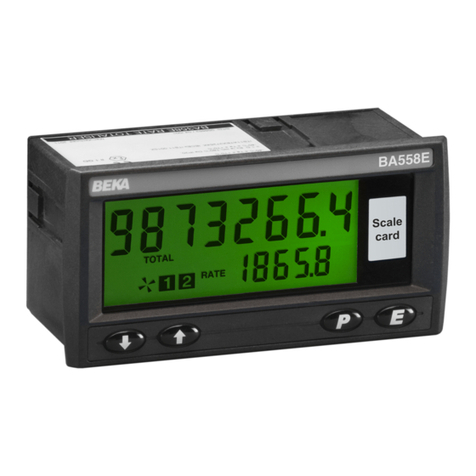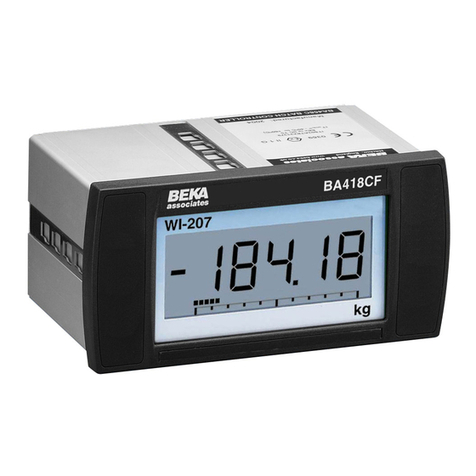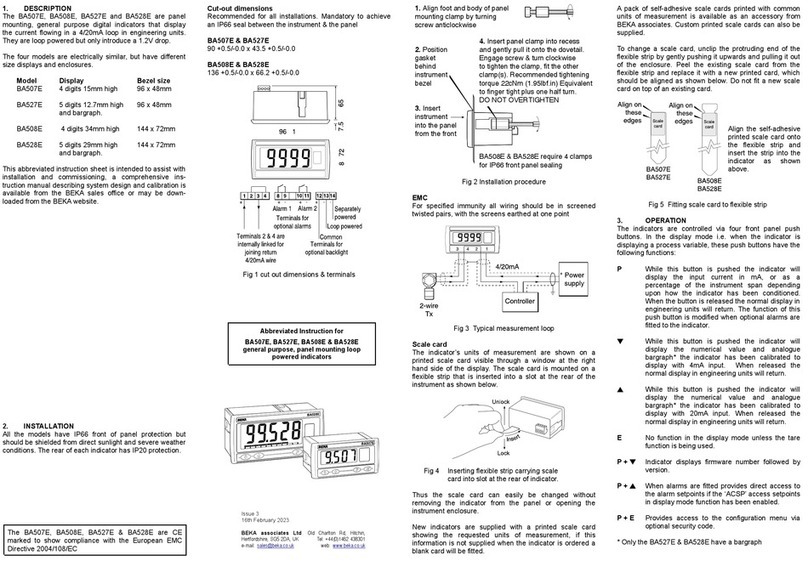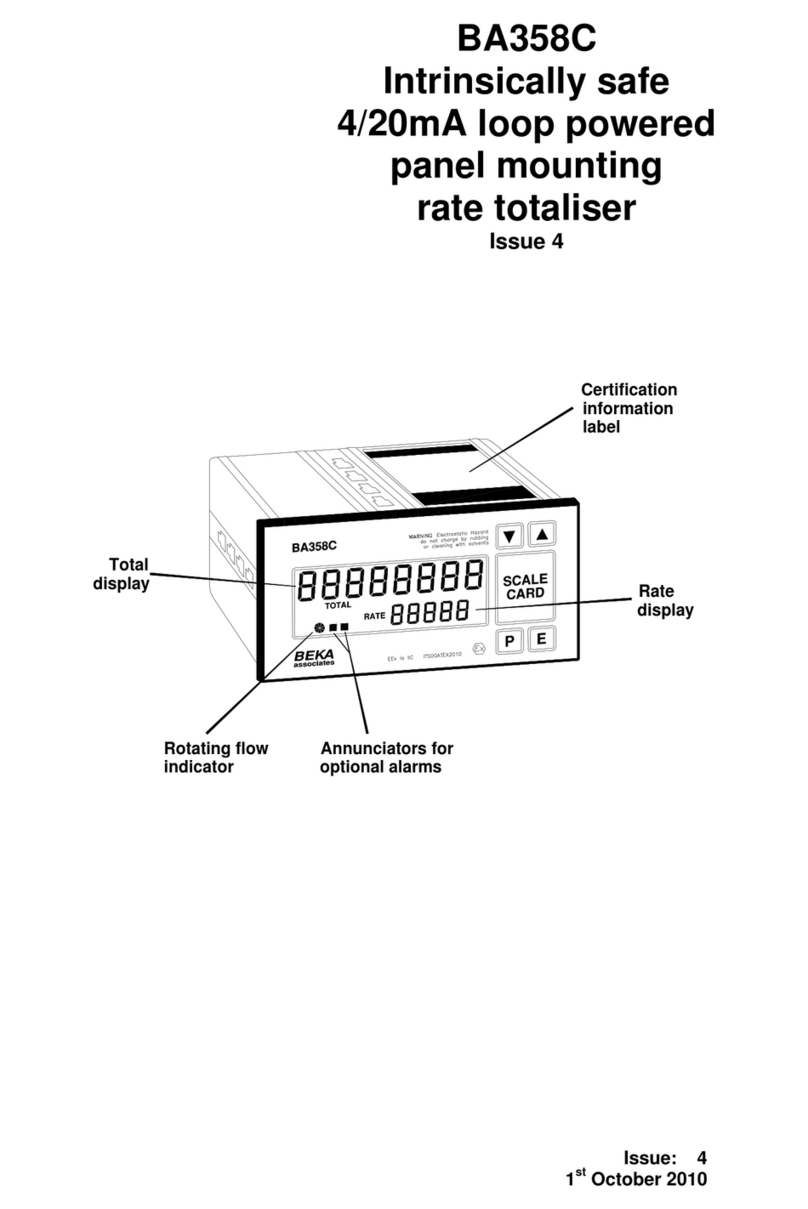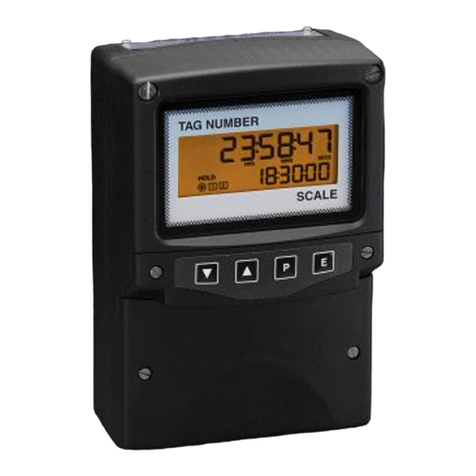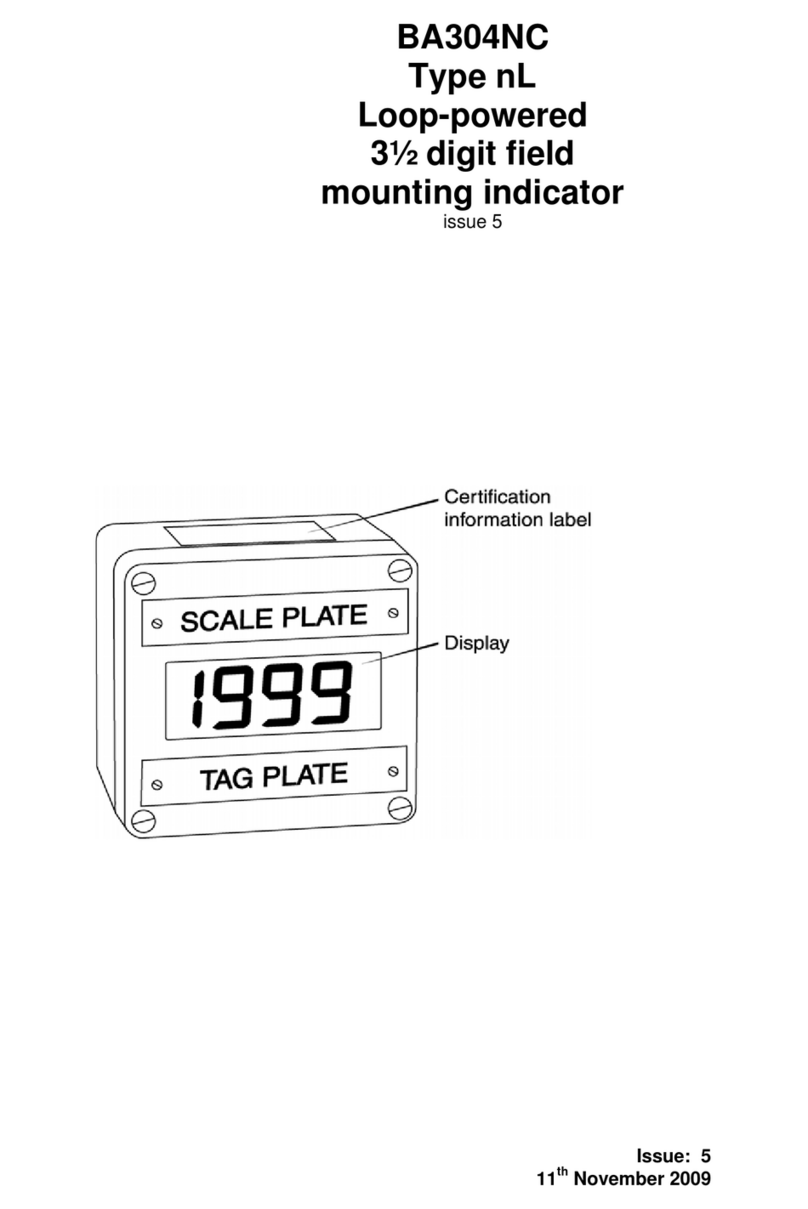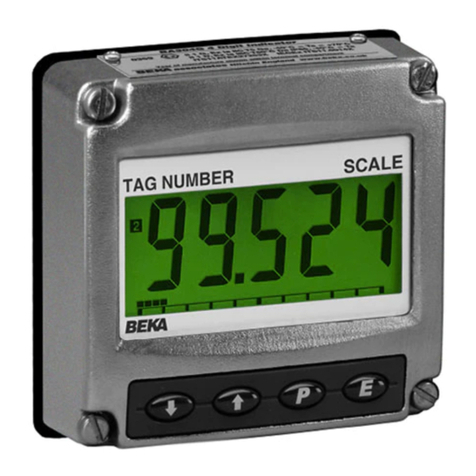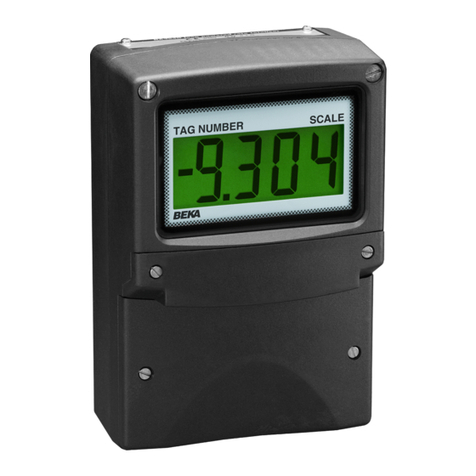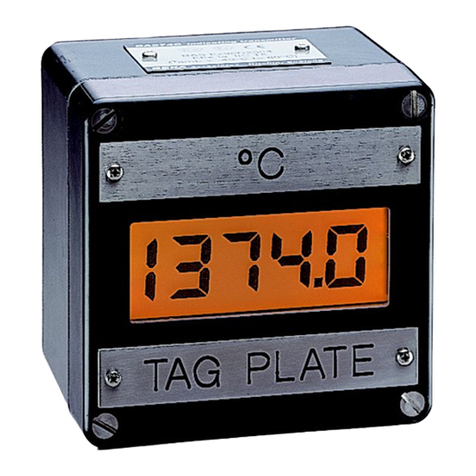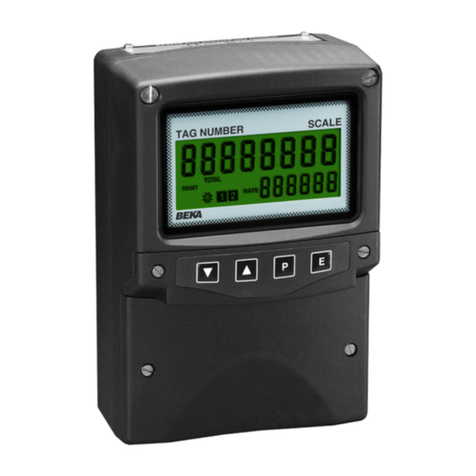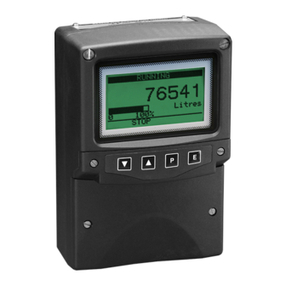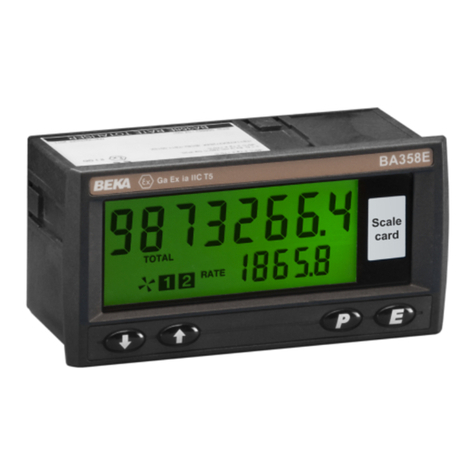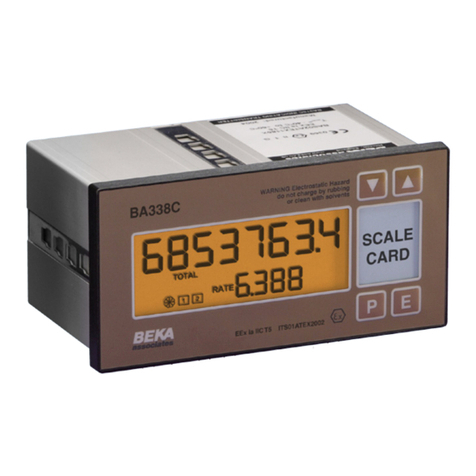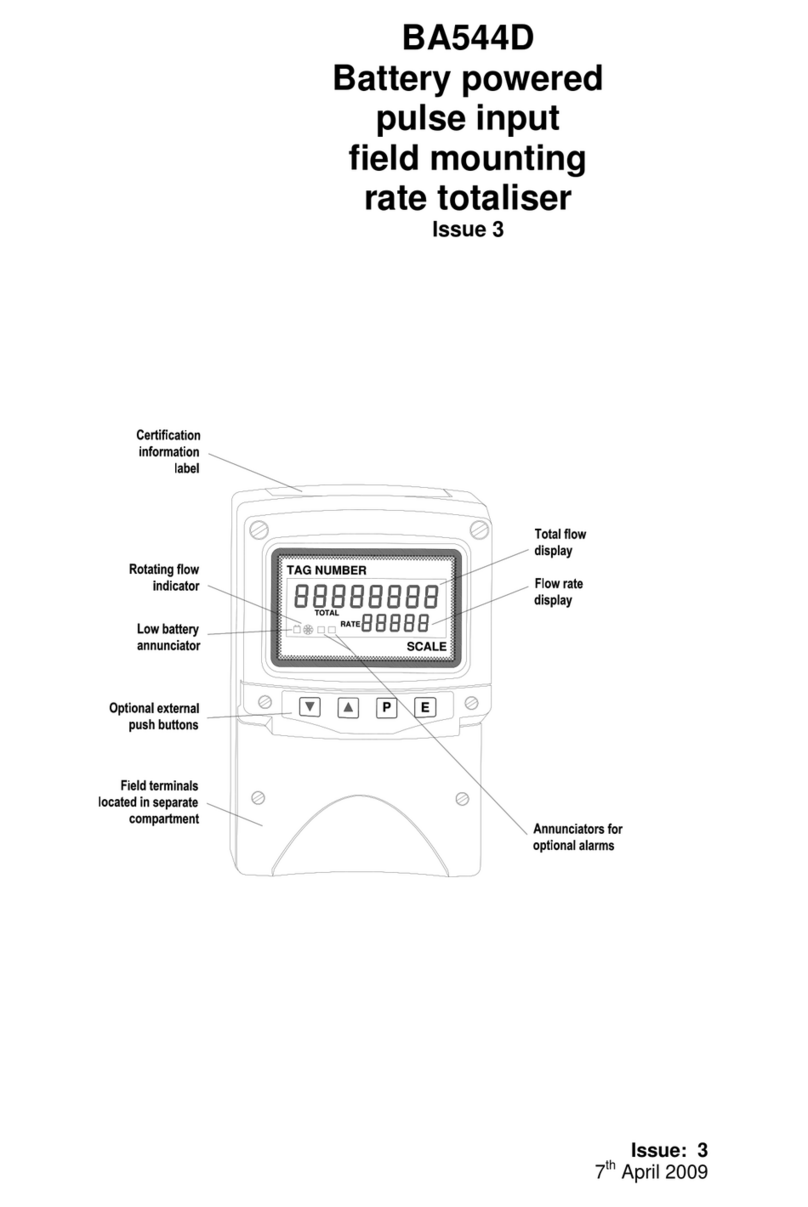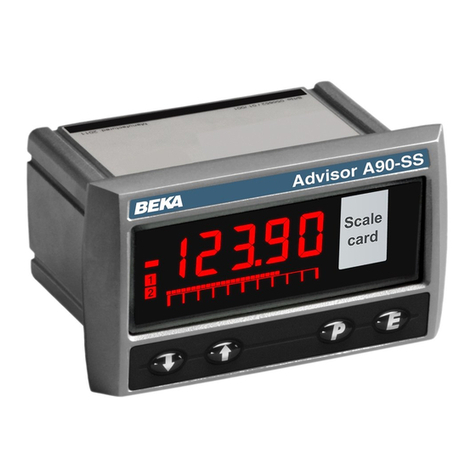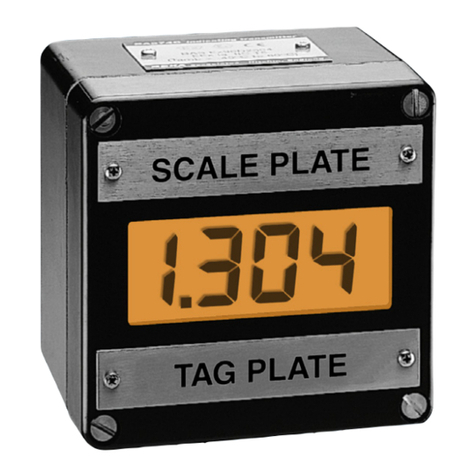1. DESCRIPTION
The BA427 -SS is a rugged, intrinsically safe, loop
powered panel mounting Set Point Station which
enables the current flowing in a 4/20mA loop to be
manually adjusted via the front panel push buttons,
or an optional external rotary control. The main
application is the adjustment of a plant parameter,
such as a controller set point or an actuator position,
from within a hazardous process area.
Housed in a rugged stainless steel case, the
intrinsically safe BA427 -SS may be safely installed
in an x e, x p, x n or x t panel enclosure without
invalidating the panel enclosure's certification.
To simplify adjustment the Set Point Station
incorporates a 5 digit display and a 31 segment
bargraph which may be calibrated to show the
4/20mA loop current in any linear engineering units.
An optional factory fitted backlight, which may be
loop or separately powered, enables this display to
be read in all lighting conditions.
The BA427 -SS loop current is adjustable between
3 and 22mA but the range may be restricted if only
limited adjustment is required. In addition to the
output being continuously variable, five pre-set
output currents may be configured and subsequently
selected from the front panel push buttons. To
minimise plant disturbance the maximum output rate
of change may be defined.
The BA427 -SS has AT X and UK X intrinsic
safety certification for use in gas and dust hazardous
areas. Both certificates confirm that the front of the
instrument complies with x e, x p and x t ingress
and impact requirements, which in addition to normal
intrinsically safe applications, allows the BA427 -SS
to be installed in an x e, x p or x t panel
enclosure without invalidating the enclosure's
certification.
For international applications the BA427 -SS has
I C x gas and dust certification which is described
in Appendix 2.
2. OPERATION
This instruction manual describes AT X & UK X
system design and installation for use of the
BA427 -SS in a gas hazardous area. Please refer
to Appendix 1 for details of AT X & UK X dust
certification and to Appendix 2 for I C x certification.
Fig 1 shows a simplified block diagram of the
BA427 -SS manual Set Point Station. The 4/20mA
current flowing in the loop may be manually set at
any value between approximately 3 and 22mA using
the front panel & and * push buttons. Initially the
output current changes slowly, but after the button
has been pressed for five seconds the rate of
change accelerates to allow large changes to be
made quickly. The five pre-set outputs, which are
selectable via the instruments front panel push
buttons, allow the operator to quickly select
frequently used plant set points.
To prevent plant disturbance the maximum rate of
output current change initiated by operating the front
panel push buttons, switching between pre-set
outputs or using an optional external encoder may
be defined.
The output resistance of the BA427 -SS is very
high, within the specified operating voltage range,
the loop current will therefore be unaffected by
changes in the supply voltage.
CAUTION
The BA427 -SS output should not be used for
critical safety applications.
Versatile calibration facilities allow the 5 digit internal
display to show the 4/20mA loop current in linear
engineering units. For example, in an application
where the BA427 -SS is being used to adjust the set
point of a speed controller, the internal indicator may
be calibrated to display the required speed in RPM.
For applications in poorly illuminated areas a factory
fitted green backlight is available which may be loop
or separately powered. When loop powered the
backlight produces background illumination enabling
the display to be read at night or in poor lighting
conditions. No additional power supply, intrinsic
safety interface or field wiring are required, but the
Set Point Station voltage drop is increased. When
separately powered, the backlight is brighter but an
additional intrinsic safety interface and field wiring
are required.
Fig 1 Simplified block diagram of BA427 -SS
